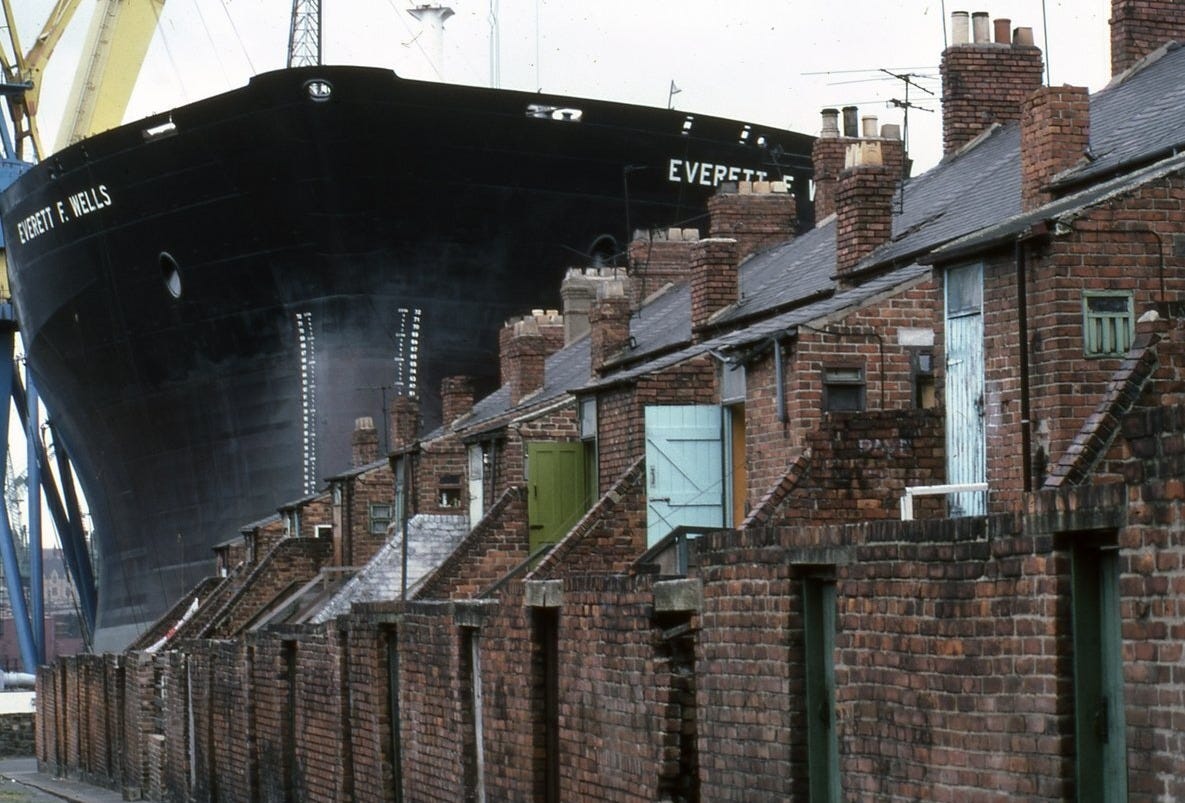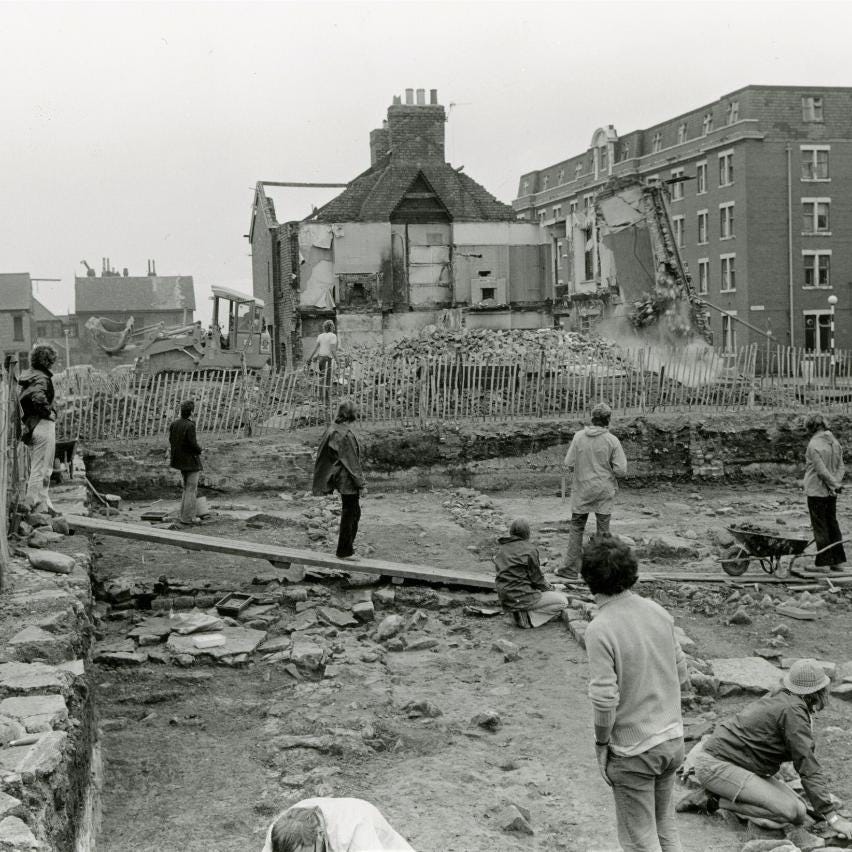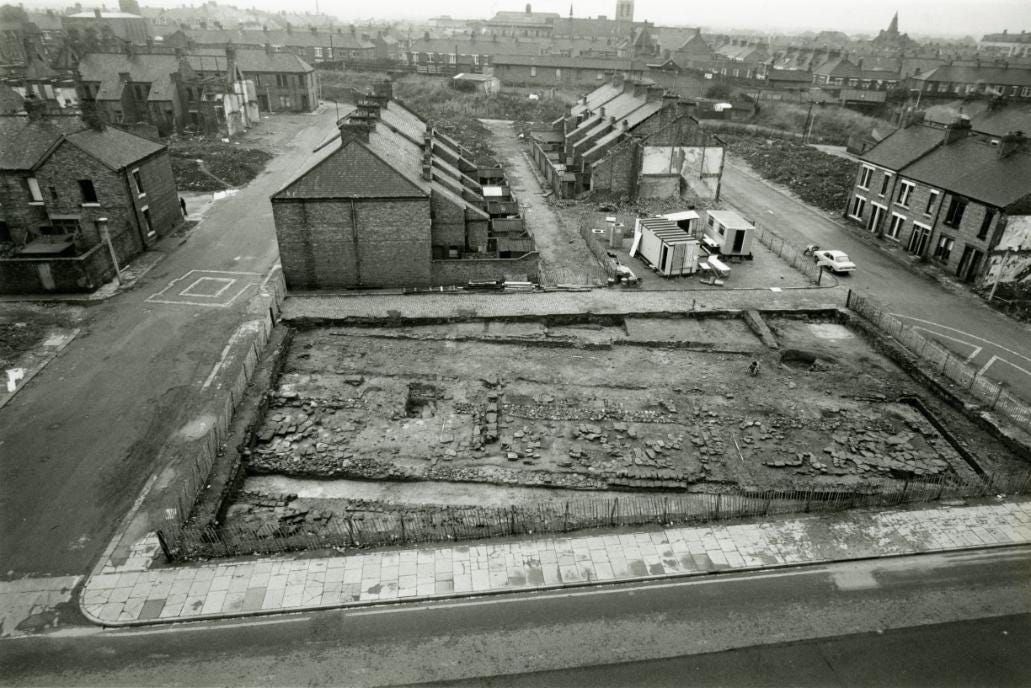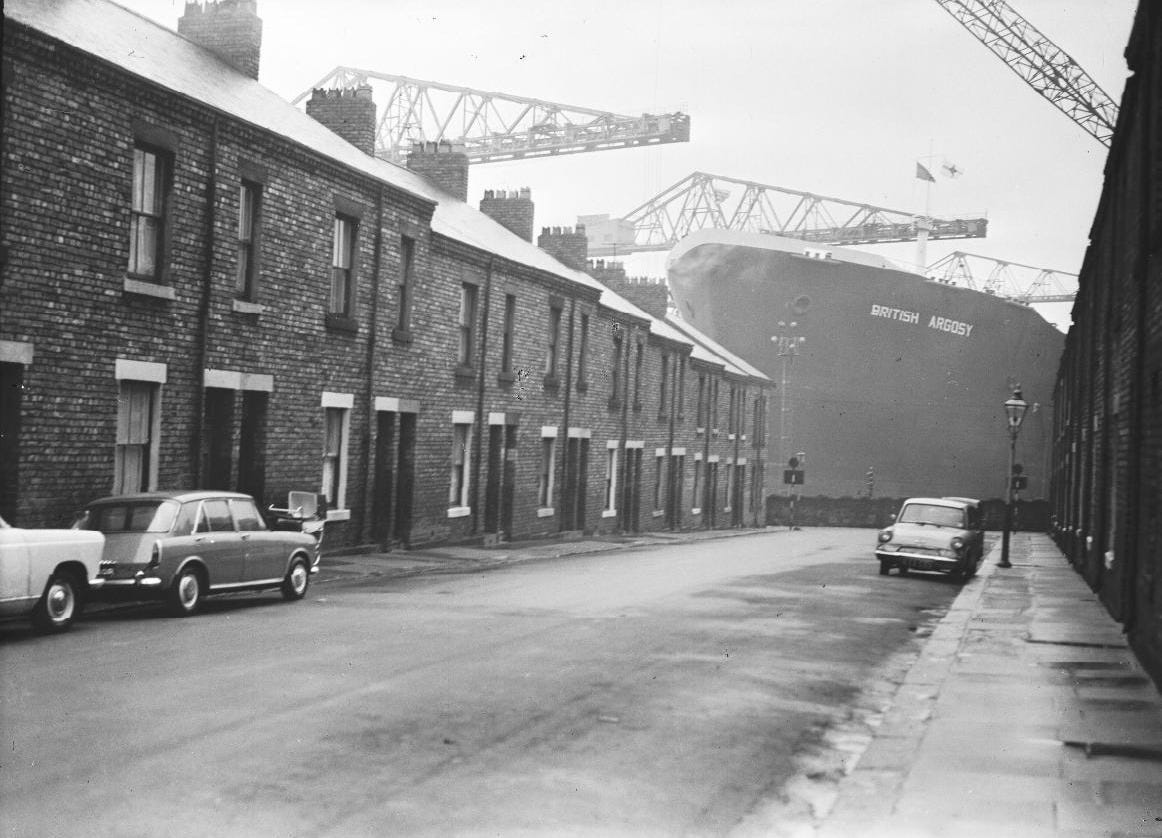From shipyards to centurions: Wallsend’s layered history
Remembering the families who lived their lives on top of a Roman fort. Tony Henderson reports on a new exhibition
Few of the families packed into the terraced streets around a Tyneside shipyard would have been aware of the thousands of individuals who had lived at the same location centuries previously.
The streets adjacent to the Swan Hunter yard were built from the late 19th century to house the influx of workers to Wallsend as shipbuilding and mining boomed.
The homes were constructed on and around land which had been the site of the Roman fort of Segedunum, garrisoned by a mixed force of infantry and cavalry and occupied for around 300 years.
That history lay hidden until the 1970s when demolition work began on the terraces and excavations started to reveal the remains of the fort.
Now a new exhibition has opened at the fort titled Streets Above: Photographs of the Roads and Buildings that Covered Roman Wallsend.
The images bring back the lives of workers in places like Jubilee Street, Davis Street, Leslie Street, Gainers Terrace, Joan Street, Gerald Street, Winifred Gardens, Plantation Street, Hunter Street and Wooley Street.
They include shots of giant tankers such as Esso Northumbria (launched in 1969), British Argosy, World Unicorn and Everett F Wells, which famously towered over the nearest street as the ships were constructed.
Another landmark was Simpson’s Hotel, which with 300 bedrooms was built to accommodate the inward flow of workers.
It advertised:
The hotel is the largest residential building in Wallsend, built on the site of the Roman Wall and the Camp of Segedunum
“The hotel is equipped with a large restaurant and two small dining rooms, lounge, reading room and games room, all centrally heated, modern toilets with bath and showers. Wedding parties catered for.
Buddle Street in Wallsend was the head office of Simpsons Hotels Ltd, which ran an almost identical hotel in High Lane Row in Hebburn and in Glasgow.
One of the powerful images in the exhibition shows excavation volunteers pausing work on one of the first fort plots to watch the demolition of a nearby house, with the hotel also in the frame.
A second exhibition, Collecting the Past, explores the diverse and often random collections amassed by 19th century local museums, which aimed to bring “the world under one roof.”
Among the items acquired by the museums, many of them gifted, is a sample of a mosaic from Carthage in Tunisia, wall plaster collected in 1858 from Pompeii, fragments of ancient Egyptian textiles, a 604–502 BC brick from Babylon, and objects from what was one of the largest collections in private hands, owned by the wealthy Quaker Edward Backhouse.
Geoff Woodward, museum manager at Segedunum, said: “Segedunum’s new exhibitions are a must-see for anyone passionate about uncovering the layers of our past.
“From rare artefacts collected in the 19th century to evocative 20th century photographs of lost streets above the Roman fort, these displays offer a unique window into the richness of history, both locally and internationally.”
Funding for the exhibitions, which run until February 28, has come from Arts Council England, and the UK Shared Prosperity Fund via the North East Combined Authority.





